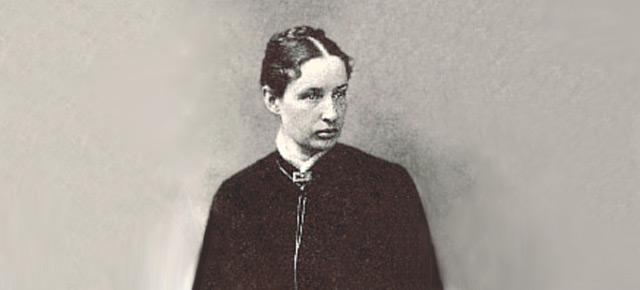In the midst of the nation’s first great depression that began in 1873 with the collapse of the New York City financial markets, the House of Refuge for Women was built in Hudson, 30 miles south of the state capital of New York in Albany. Opened in 1887, the House of Refuge was only the second reformatory for women established by law in the United States and the only prison in New York at that time for women sentenced by the state. Previously, such women were confined either in New York City or at the state reformatory for men in Elmira, NY. At the time, women were also often confined in local county jails. Appalled by conditions in the jails and poor houses of the day, Josephine Shaw Lowell – Brahmin, Progressive reformer, anti-poverty activist and first female commissioner of the New York State Board of Charities – campaigned for the establishment of a separate correctional facility for women in New York.
Lowell (1843 – 1905) fought for policies that she thought would eliminate poverty not just deal with its consequences. She became a leader of the new “scientific social reformers” who focused on family patterns as the primary source of poverty and social disorder and on the role that ‘indiscriminate charity’ played in perpetuating those patterns. In the 1870’s, fears about the formation of a permanent underclass of paupers and criminals had turned the Victorian era “cult of true womanhood” on its head: the “fallen woman” was seen as the creator of idle and vicious generations that drained the nation’s resources and threatened its stability.
Guided by the belief that older women were unredeemable, The House of Refuge at Hudson accepted only young women, ages 15 to 30 and later 15 to 25, convicted of petit larceny, habitual drunkenness, and prostitution.
Prison historian Nicole Han Rafter observes that life at the House of Refuge for Women was also delineated by two other characteristics – the apparent exclusion of black women and the acceptance of babies born to its female residents.
The House of Refuge for Women, like other reformatories of the time, kept custody of women according to the principles of indeterminate sentences. Young women were confined for up to five years, believing that such a period under custody was necessary for the “breaking of pernicious habits.”
The House of Refuge at Hudson was also the first prison for adults In the United States to adopt the cottage plan, breaking from the custodial architecture then prevalent in this country. The House of Refuge adopted the European system of complexes of cottages in rural areas organized to provide a home – or family-like atmosphere. The location of the prison, on 40 acres overlooking the Hudson River, reflected the growing faith of that time in the curative powers of the rural countryside.
In New York, the House of Refuge for Women’s demise coincided with the construction of two new reformatories built for adult women: One prison in Albion, New York near Buffalo, which opened in 1893, was designed for women from upstate and western sections of the state; the other prison, in Bedford Hills, New York, opened in 1901 for downstate and New York City women.
In 1904, the House of Refuge for Women closed and was transformed into the New York State Training School for Girls.

